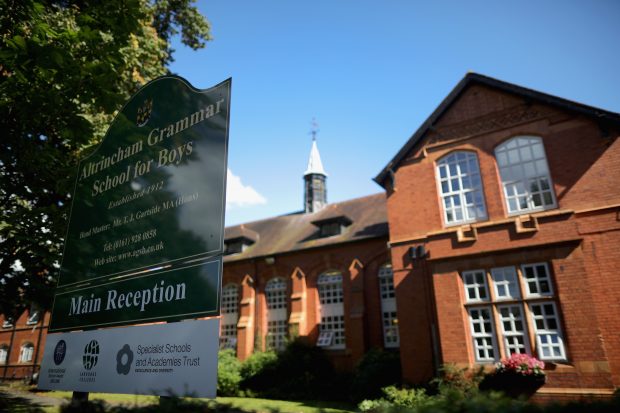Yesterday afternoon the government released a new Green Paper which focussed on its initial proposals for expanding the number of high-quality school places throughout both the primary and secondary sectors. This task is particularly urgent given the existence of a demographic bulge currently passing through the primary year groups.
The proposed reforms are united by an overarching theme, which is a desire to provide a higher-quality education for the children of those parents who are ‘just about managing’ (a phrase the document frequently returns to), and whose earnings are just above the free school meals cut-off (around £16,190). The paper tackles the problem of how best to meet the needs of this group by outlining a number of policies to increase the impact of independent schools, faith schools, grammar schools, and universities on the broader state sector.
The paper’s proposals for the independent sector are likely to be its most popular with the general public. It argues for a far more stringent public-benefit test to justify charitable status for private schools. Private schools wishing to retain this status will need to either sponsor an academy or free school, or offer a substantially higher number of fully-funded bursaries than they currently do. The paper does not make it entirely clear whether or not these bursaries will be paid for by the government or by the schools themselves, although I suspect the latter is what the government has in mind. Smaller independent schools, which lack the capacity to become academy sponsors, will be required to share facilities and teaching staff with the state sector, particularly for valuable minority subjects such as Latin, Greek and Mandarin.
The proposals for the country’s universities are bold. The paper envisages a world in which every university charging higher-rate fees either becomes an academy sponsor or sets up a new free school as a condition of doing so. There are serious questions to be asked about whether or not the country’s universities have the administrative capability to be playing such an active role in the primary and secondary education sectors. Running a school is not a trivial business, and even high-achieving existing academy chains have previously run into difficulties when they sought to expand too quickly. Another risk is that universities will entrust their education departments with these responsibilities, which may lead to a lack of ideological diversity when it comes to their views on teaching and learning. A better proposal would be for universities to organise high-quality small-group tutoring within schools. There is evidence to suggest that such interventions are one of the more effective ways to improve the exam performance of adolescents.
The expansion of grammar schools – and selective education more broadly – will inevitably be the most controversial part of the document. The move towards scrapping the limits on the ability of new faith schools to select their intake by faith is small beer by comparison. The Green Paper proposes that existing grammars should be allowed to expand, new grammars should open, and existing comprehensive schools should be allowed to become selective. It also proposes encouraging multi-academy trusts to select within their trust, in order to set up ‘centres of excellence’ for the education of their most able students. The paper contains a number of proposed mechanisms for ensuring that this proposed expansion of selective schools does in fact benefit the children of those ‘just about managing’. This includes quotas for low-income pupils at selective schools, which would compel schools to set up new non-selective free schools as a condition of becoming selective or, at the very least, partner with existing multi-academy trusts to sponsor and share resources with an under-performing non-selective school within that trust.
Just as is the case for universities and independent schools, there are serious questions to be asked about whether today’s selective schools – or schools that would like to become selective – have the capability to establish new non-selective schools, or sponsor academies. It is one thing to be an expert in the education of the high-ability and well-behaved. It is quite another to be an expert in the education of those who fared less well in nature’s lottery. The evidence on this matter is somewhat lacking and hopefully some small-scale trials will take place before a mass roll-out, although a mass roll-out of new grammar schools may not be what the government has in mind.
Furthermore, it is unclear whether the Green Paper adequately resolves the problem of negative peer effects. A general finding in educational literature is that pupils benefit from being educated alongside high-ability, well-behaved children and suffer from being educated alongside low-ability and badly-behaved children. Any system that segregates the high and low-attaining into different buildings from a fairly young age will have this effect, and the Green Paper contains no obvious strategy for mitigating it beyond the measures it proposes for increasing the number of good non-selective schools. It is not clear to me, in fact, that any mitigation is possible at all.
Andrew Sabisky is a freelance writer and independent research worker with a background in educational psychology.






Comments